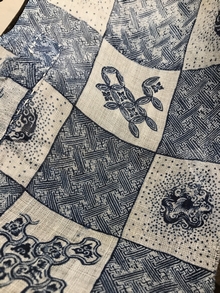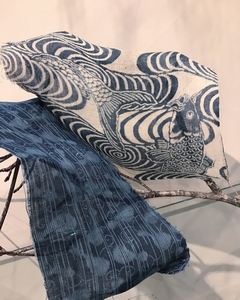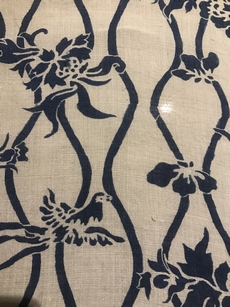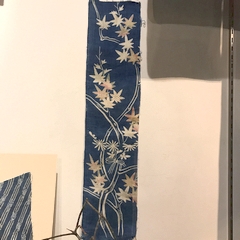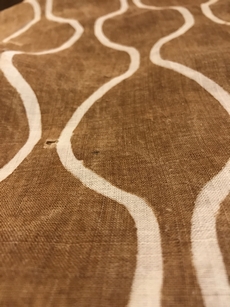Copyright 2002 Gallery Kei. All rights reserved.
麻の型染め展
2018年
5月19日―23日
- Katazome-
An Exhibition of Japanese Stencil-dyed Hemp and Ramie Textiles
19- 23 May 2018
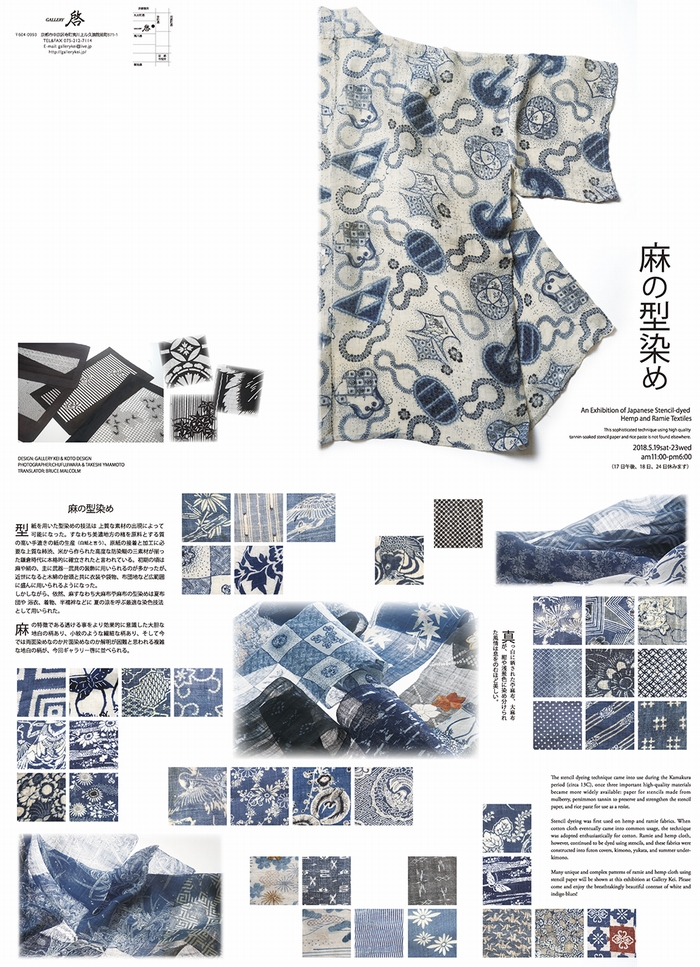
麻の型染めー
型紙を用いた型染めの技法は 上質な素材の出現によって可能になった。すなわち美濃地方の楮を原料とする質の高い手漉きの紙の生産(白紙と言う)、原紙の接着と加工に必要な上質な柿渋、米から作られた高度な防染糊の三素材が揃った鎌倉時代に本格的に確立されたと言われている。初期の頃は麻や絹の、主に武器-武具の装飾に用いられるのが多かったが、近世になると木綿の台頭と共に衣装や袋物、布団地など広範囲に盛んに用いられるようになった。
しかしながら、依然、麻すなわち大麻布苧麻布の型染めは
夏布団や 浴衣、着物、半襦袢などに 夏の涼を呼ぶ最適な染色技法として用いられた。
木綿以前から続けられてきた実績なのであろうか? 麻の特徴である透ける事をより効果的に意識した大胆な地白の柄あり、小紋のような繊細な柄あり、そして今では両面染めなのか片面染めなのか解明が困難と思われる複雑な地白の柄が、今回ギャラリー啓に並べられる。

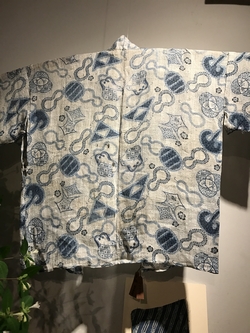
-Katazome-
This sophisticated
technique using high quality tannin-soaked stencil paper and rice paste
is not found elsewhere.
The stencil dyeing technique came into use during the Kamakura period
(circa 13C), once three important high-quality materials became more
widely available: paper for stencils made from mulberry, persimmon
tannin to preserve and strengthen the stencil paper, and rice paste for
use as a resist.
Stencil dyeing was first used on hemp and ramie fabrics. When cotton
cloth eventually came into common usage, the technique was adopted
enthusiastically for cotton. Ramie and hemp cloth, however, continued to
be dyed using stencils, and these fabrics were constructed into futon
covers, kimono, yukata, and summer under-kimono.
Many unique and complex patterns of ramie and hemp cloth using stencil
paper will be shown at this exhibition at Gallery Kei. Please come and
enjoy the breathtakingly beautiful contrast of white and indigo blues!
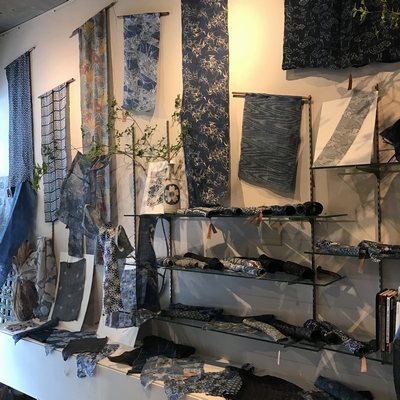

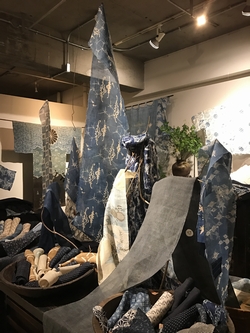

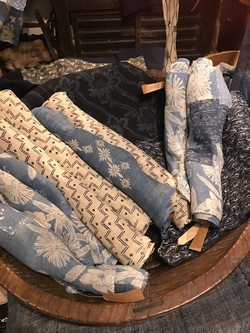



he



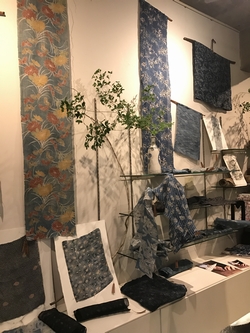
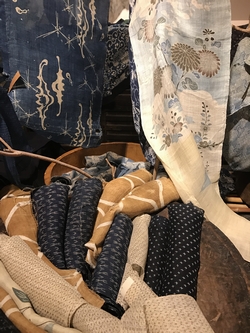




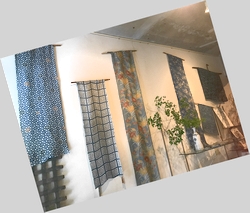






真っ白に晒された苧麻布、大麻布が、紺や浅葱色に染め分けられた風情は息をのむほど美しい。
